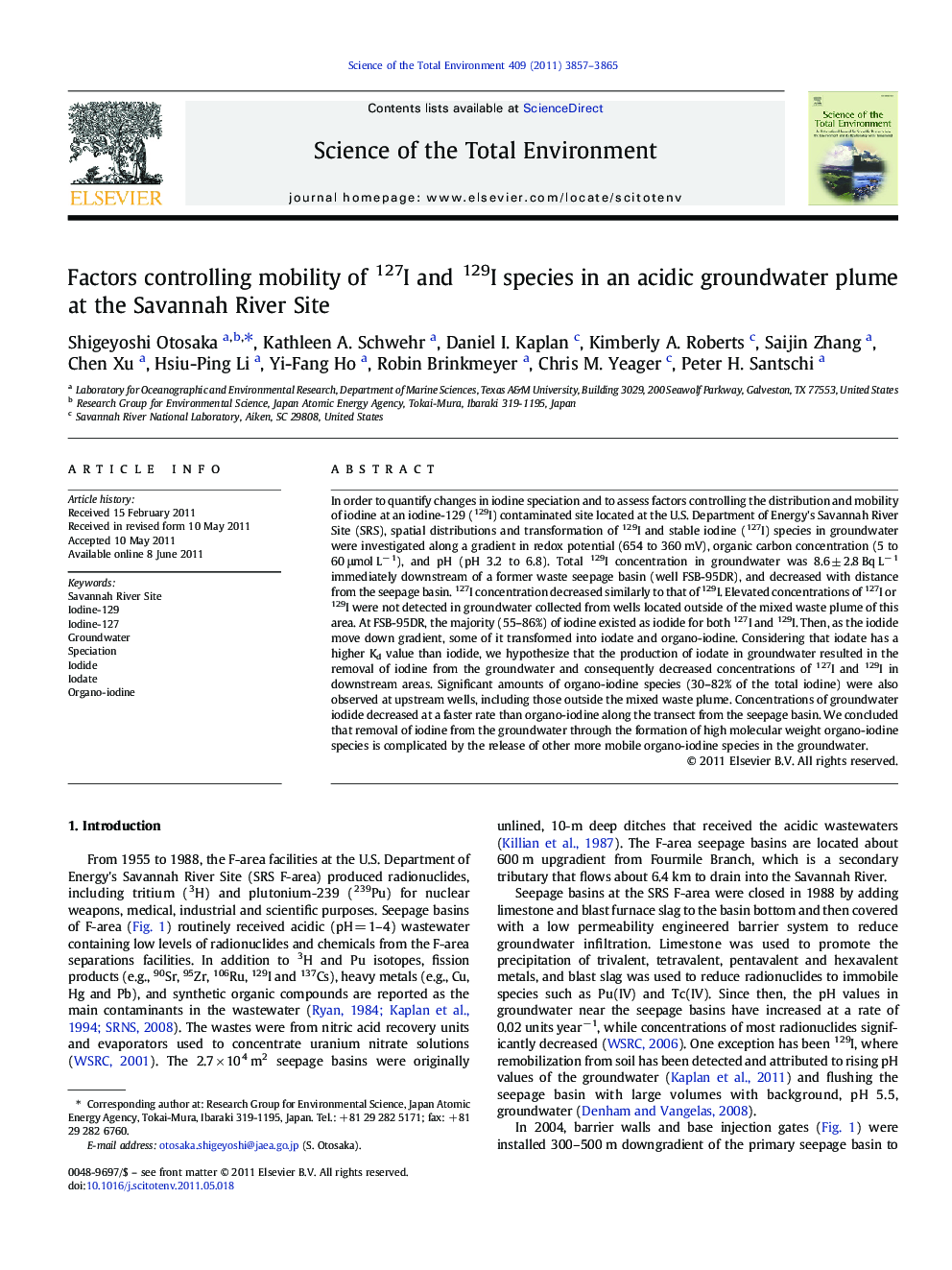| Article ID | Journal | Published Year | Pages | File Type |
|---|---|---|---|---|
| 4430041 | Science of The Total Environment | 2011 | 9 Pages |
In order to quantify changes in iodine speciation and to assess factors controlling the distribution and mobility of iodine at an iodine-129 (129I) contaminated site located at the U.S. Department of Energy's Savannah River Site (SRS), spatial distributions and transformation of 129I and stable iodine (127I) species in groundwater were investigated along a gradient in redox potential (654 to 360 mV), organic carbon concentration (5 to 60 μmol L− 1), and pH (pH 3.2 to 6.8). Total 129I concentration in groundwater was 8.6 ± 2.8 Bq L− 1 immediately downstream of a former waste seepage basin (well FSB-95DR), and decreased with distance from the seepage basin. 127I concentration decreased similarly to that of 129I. Elevated concentrations of 127I or 129I were not detected in groundwater collected from wells located outside of the mixed waste plume of this area. At FSB-95DR, the majority (55–86%) of iodine existed as iodide for both 127I and 129I. Then, as the iodide move down gradient, some of it transformed into iodate and organo-iodine. Considering that iodate has a higher Kd value than iodide, we hypothesize that the production of iodate in groundwater resulted in the removal of iodine from the groundwater and consequently decreased concentrations of 127I and 129I in downstream areas. Significant amounts of organo-iodine species (30–82% of the total iodine) were also observed at upstream wells, including those outside the mixed waste plume. Concentrations of groundwater iodide decreased at a faster rate than organo-iodine along the transect from the seepage basin. We concluded that removal of iodine from the groundwater through the formation of high molecular weight organo-iodine species is complicated by the release of other more mobile organo-iodine species in the groundwater.
► Mobility of speciated iodine isotopes was inferred from groundwater measurements. ► pH changes caused release and transformations of iodide species. ► The injection of base solution to the system stimulated production of iodate. ► Natural organic matter and pH regulate mobility of iodine.
